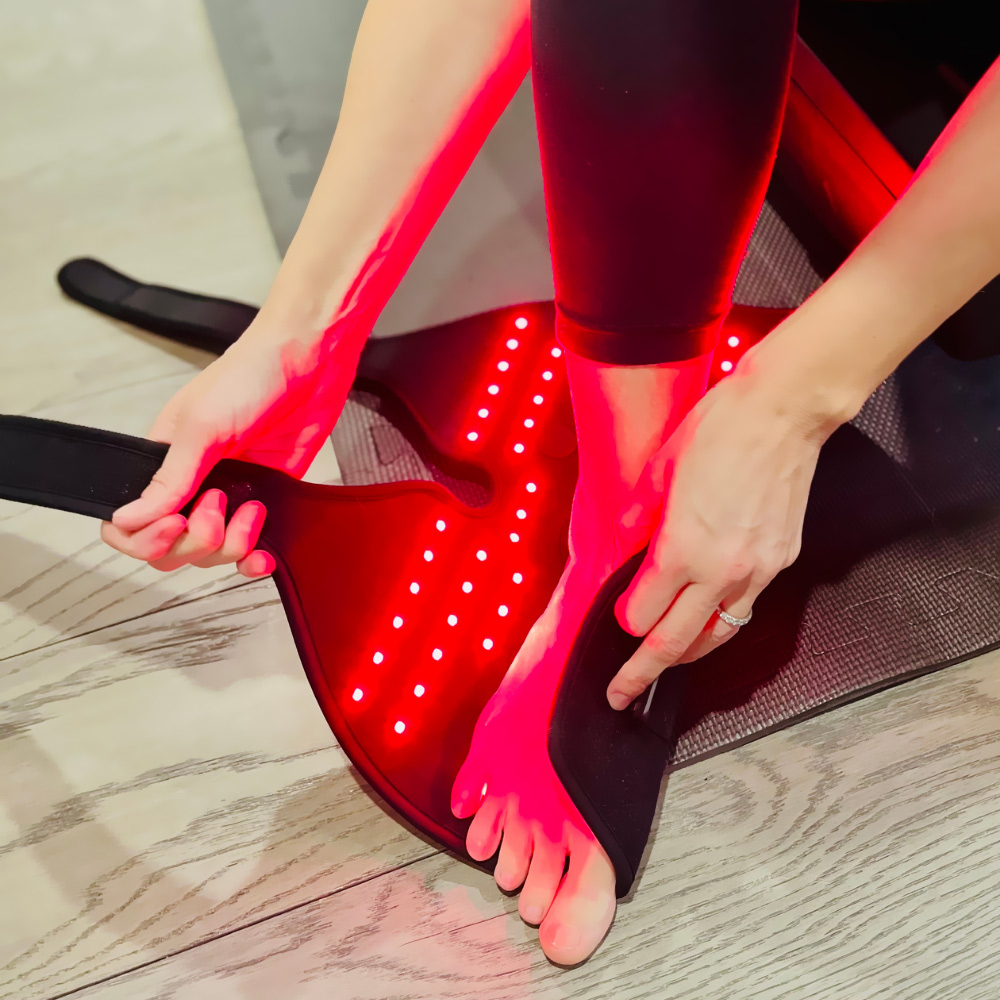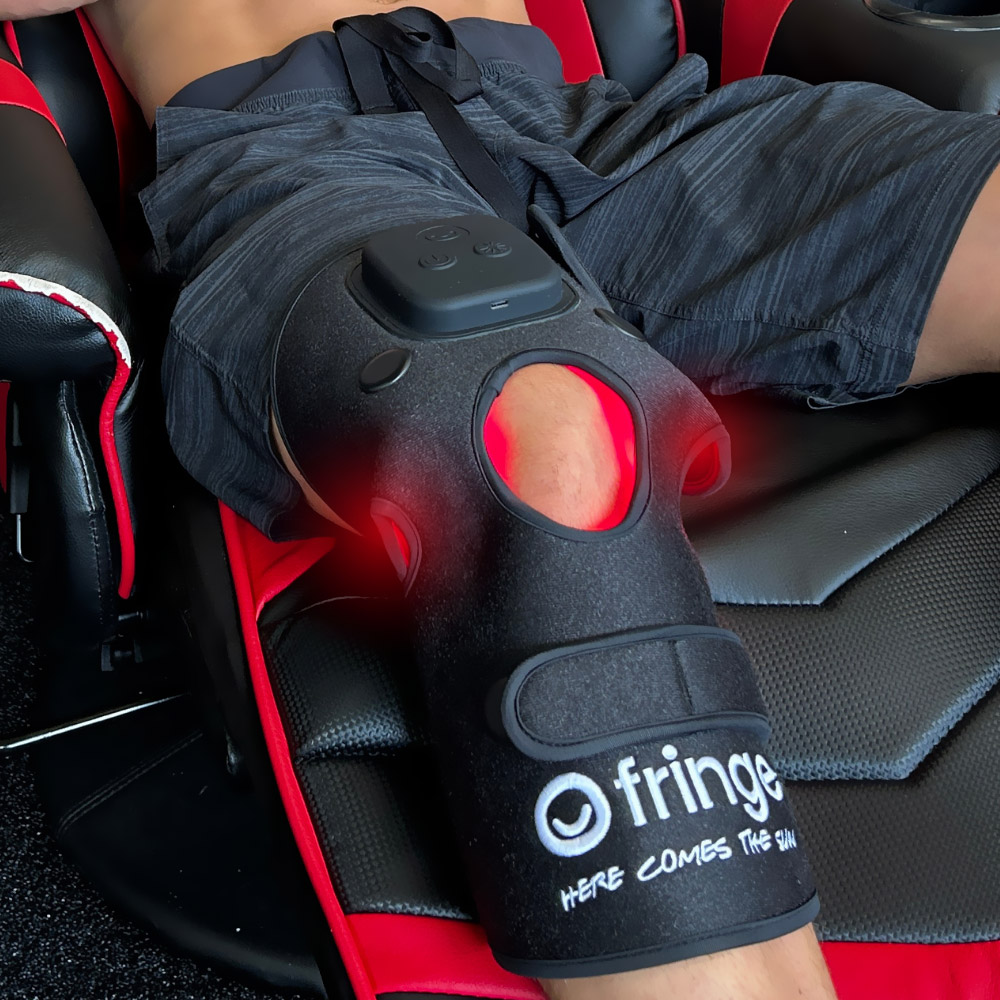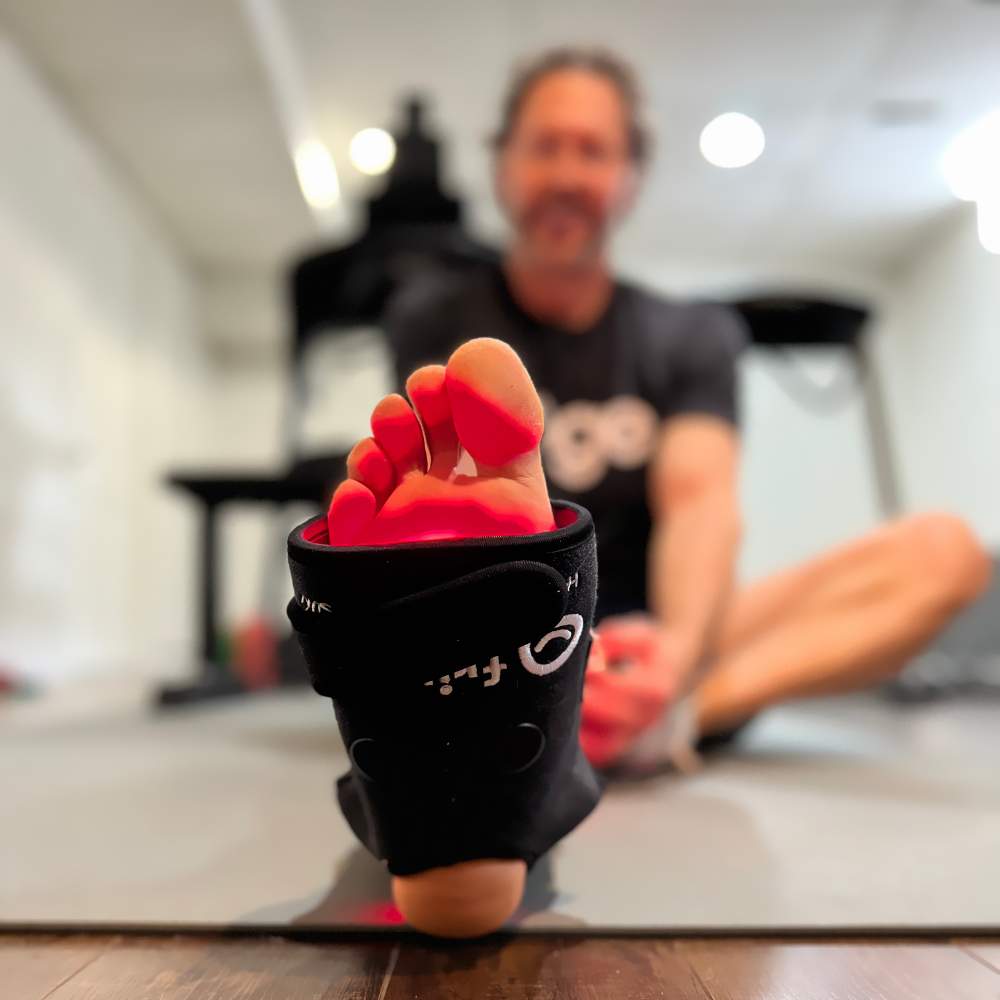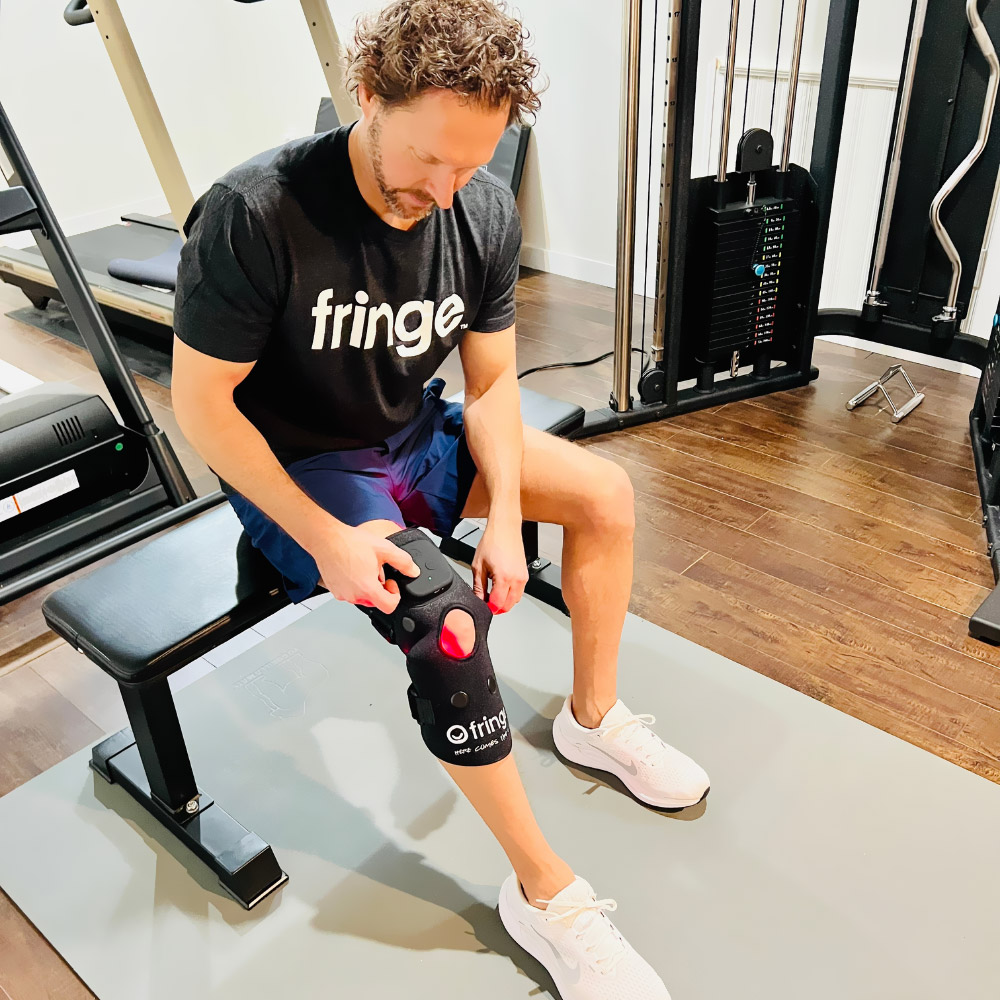Red Light Therapy for Sports Injuries: Faster Recovery for Sprains, Strains, and Swelling
Fall camp is upon us! Like it or not (most of us have mixed feelings this time of year), football, soccer, volleyball and other sports are, or soon will be ramping up. With that comes a host of acute injuries. Ankles, knees, elbows and other joints are now subject to sprains, contusions, swelling and in some cases, surgeries.


red light is the new ice
At Fringe, our favorite tool to treat joint injuries is Red Light Therapy. Red Light Therapy uses red and near infrared light to stimulate cellular healing, decrease pain and inflammation, and help our bodies to recover more quickly. It has the pain-relieving properties of ice without the detrimental effects on tissue healing. In many ways, Red Light Therapy is truly the new ice.
How Red Light Therapy Speeds Recovery from Joint Injuries
After a joint injury, our bodies go through several stages of healing, which can last for days, weeks, and even months. Red Light Therapy can help every step of the way, starting from the initial insult to the final stage of tissue remodelling. Here’s how it shines (pun intended!) across the entire healing journey.

Stage 1: Inflammation Management After Acute Injury
(First Few Days)
We know that after an acute injury, immune cells rush in to start working their inflammatory magic. Inflammation in the first days after injury is essential for clearing out damaged tissue and signaling the body to begin repair. Inflammation is normal and desirable at this stage of injury, but if it lingers too long, it can slow healing. The goal is to expedite the inflammatory process at this stage.

Both red and near infrared light can help during the inflammatory phase by ensuring that inflammation doesn’t last longer than necessary and supports the body shifting into an anti-inflammatory state as healing progresses. It also helps to reduce pain and swelling, which are at their worst immediately following injury.
Red Light Therapy also increases blood flow. If there is external bleeding, you may want to wait until it has fully stopped (typically within 12 to 24 hours) before starting. But if there’s no bleeding, like with a sprain or strain, RLT can be applied right away to begin supporting the healing process. Increasing blood flow supports healing by delivering more oxygen and nutrients for tissue repair, along with white blood cells that help clean up damaged tissue and coordinate the immune response.

Stage 2: Tissue Repair in the Sub-Acute Phase
(Days to Weeks)
Once we have made it through the acute phase of an injury, it can be tempting to stop treating the area, but we strongly encourage you to keep going, through the sub-acute phase of the injury recovery process.

In this phase of healing, Red Light Therapy may still be needed to reduce pain and inflammation, and to increase blood flow, but it also has other benefits. Things now have shifted from “crisis” to “healing” mode, and there is much repair work to be done. During healing, it is necessary to repair and replace damaged tissue. This requires cellular energy, protein synthesis, and new blood vessel formation. Red Light Therapy has been shown in numerous scientific studies to help with all these things.

Stage 3: Long-Term Tissue Remodeling After Injury
(Weeks to Months)
As the patient continues to progress back to their full activity levels, they may still need support through the final stages of healing. We want to make sure that we don’t stop their treatment too early and miss out on a vital stage of healing that can help prevent re-injury.

The most important use of Red Light Therapy during this phase is to support the cells within muscle, tendons, ligaments, and skin as they rebuild strong, flexible tissue in the process of tissue remodelling and maturation. Collagen – that critically important protein found in all supportive tissue in the body – is highly responsive to red and near infrared light. Fibroblasts, the cells that are responsible for producing collagen and other components of the extracellular matrix, are particularly sensitive to these light wavelengths. In this phase, it’s not just about making more collagen, but also about organizing it properly to ensure strength and mobility. Red Light Therapy supports collagen synthesis, and ensures that healing tissue is strong, resilient, and well-aligned.


Choosing the Right Red Light Therapy Device for Athletic Injuries
The main priority when using Red Light Therapy to support joint healing is to ensure distribution of light over as much of the joint as possible. While a range of devices can be used for this purpose, some of the most common have limitations when it comes to joints, which have complex three dimensional structures and move in multiple directions.
Take, for example, a Red Light Therapy panel. Panels shine light in a single plane, so the affected body part must be placed directly in front of it. In the case of an elbow, knee, ankle, or wrist injury, this means that only one part of the joint (front, side, or back) can receive light at a time. Achieving full coverage requires repositioning, which can be inconvenient, especially when you’re injured. Panels also require people to remain stationary during treatment.
Red Light Therapy wraps offer a more effective and convenient treatment option when it comes to joints. Wraps can be placed around most joints in the body, and because they are flexible, they can deliver light to the entire joint surface. Wraps also offer the convenience of being wireless and portable.
When it comes to wraps, shape matters. While flat wraps can work well, joint specific designs – like the Fringe Multijoint Wrap – are even better. A joint specific wrap is designed for better contouring around the joint surface, and as a result, gives better coverage and more uniform light exposure. The ergonomic design of a multijoint wrap means that your body receives optimal light – and consequently, optimal healing.
conclusion
Injuries are inevitable this time of year, but how you respond to them makes all the difference. With Red Light Therapy, you have a powerful, science-backed tool to support every stage of healing, including reducing pain, calming inflammation, and helping your body rebuild stronger, healthier tissue. At Fringe, we’ve designed our Multi-Joint Wrap specifically for joints like elbows, knees, ankles, and wrists – so you can treat the full joint surface with ease to get your patients back to doing what they do faster and better.
